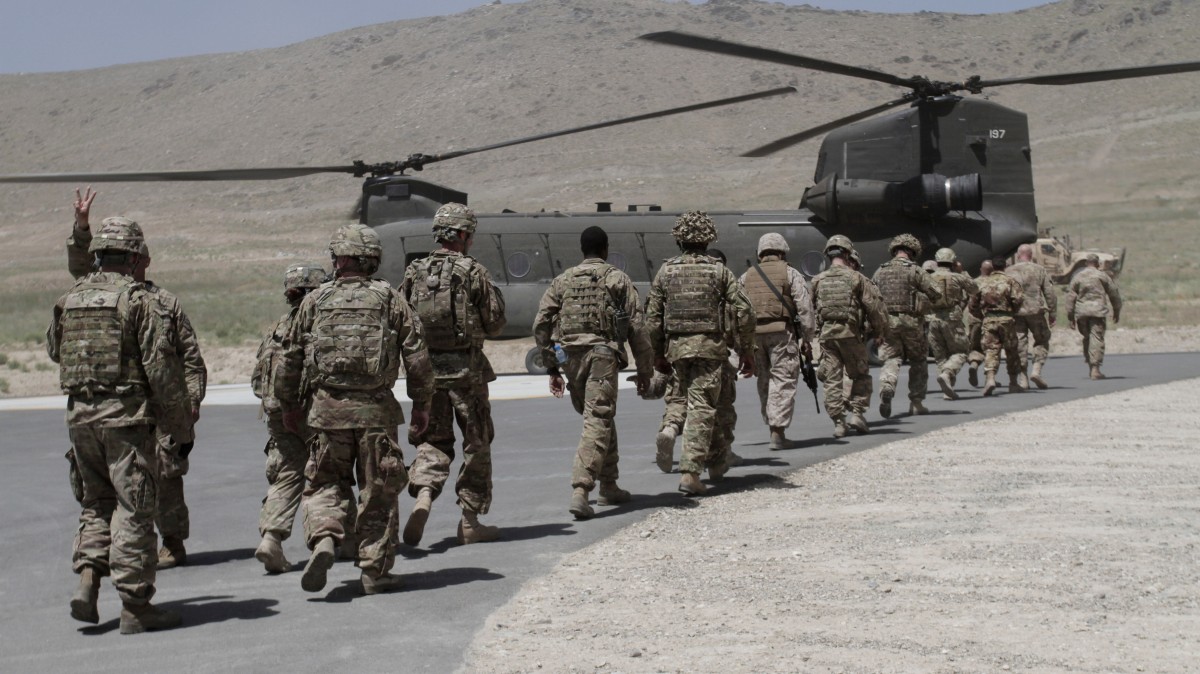 NATO solders walk towards a Chinook helicopter after a ceremony at a military academy on the outskirts of Kabul, Afghanistan, Tuesday, June 18, 2013. Photo: Rahmat Gul/AP
NATO solders walk towards a Chinook helicopter after a ceremony at a military academy on the outskirts of Kabul, Afghanistan, Tuesday, June 18, 2013. Photo: Rahmat Gul/AP
BRUSSELS — NATO Secretary-General Jens Stoltenberg said the decisions made during a daylong meeting at alliance headquarters in Brussels will “ensure that we have the right forces in the right place at the right time.”
NATO will now “be able to defend all allies against any threat, from the east or from the south,” he told reporters.
NATO’s total Response Force was increased from 13,000 to 30,000 troops and its new rapid reaction force should start to deploy within 48 hours, Stoltenberg said.
U.S. Defense Secretary Chuck Hagel and his counterparts from NATO’s other 27 member nations also ordered the creation of command-and-control centers in the capitals of the three Baltic states — Latvia, Estonia and Lithuania — as well as in Poland, Romania and Bulgaria. In an emergency the centers will help speed the arrival of the new quick-reaction force as well as later NATO reinforcements.
A new headquarters to help defend NATO members in northeastern Europe will also be created in western Poland, and Romania has volunteered to host a similar multinational divisional headquarters for southeastern Europe, the ministers said.
Six of NATO’s largest European members — Britain, France, Germany, Italy, Poland and Spain — volunteered on a rotating basis to furnish the nucleus for the quick-reaction force, a brigade-sized, land-based unit accompanied by air- and sea-based elements that should be able to deploy in a week, Stoltenberg said.
“European allies are fully playing their part, taking the lead in protecting Europe,” Stoltenberg said.
For 2015, he said, Germany, Norway and the Netherlands have already begun training and exercising a prototype version of the force.
U.S. officials have said they plan to assist the new formation with non-troop support such as airlifts, intelligence, surveillance or reconnaissance capabilities.
When asked if the U.S.-led alliance’s latest actions might fuel a Cold War-style escalation with Russia, Stoltenberg said the measures are purely defensive and were being taken only because of Russia’s actions.
“In Ukraine, violence is getting worse and the crisis is deepening,” Stoltenberg said. “Russia continues to disregard international rules and to support the separatists with advanced weapons, training and forces.”
Russia has vehemently denied allegations of being involved in the Ukrainian conflict, a stance that Western military experts dismiss. The top NATO commander, U.S. Air Force Gen. Philip Breedlove, said Thursday that Russia continues to supply the separatists in Ukraine with heavy, state-of-the-art weapons, air defenses and fighters.
In Washington, State Department spokeswoman Marie Harf said NATO’s new command and control centers and the high readiness joint task force are part of the alliance’s “measures on land, air, and sea.”
“Everything NATO does is designed to reassure the alliance that we can defend the alliance,” she said. “That is in stark contrast to what Russia has done (in Ukraine), offensively pouring weapons into another country, supporting separatists, taking over parts of territory and annexing them.”
___
Nataliya Vasilyeva in Moscow contributed to this report.

